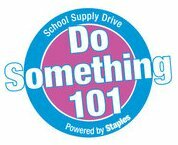Weber Media Partners | Impressions Through Media
Conversational Marketing in the Age of Social Media
- Home
- About This Blog
- Contact
- Sitemap
Archive for the ‘web 2.0’ Category
Businesses Benefit from Strategic Social Media Programs
Author: Catherine Weber3 Nov
 While social networking began as a consumer activity, it has become a crucial component of most business marketing strategies as it allows companies to reach highly targeted audiences with custom messaging to build brand awareness and establish a relationship with the customer who now expect companies to be reachable and accountable.
While social networking began as a consumer activity, it has become a crucial component of most business marketing strategies as it allows companies to reach highly targeted audiences with custom messaging to build brand awareness and establish a relationship with the customer who now expect companies to be reachable and accountable.
Business Benefits
Businesses are now regularly using tools such as Twitter, YouTube, Facebook and LinkedIn for hiring, customer support, product development, brand recognition, and, of course, client acquisition and retention. Social media has another benefit: the cost of acquiring customers is significantly lower than placing ads, and creates a lasting relationship.
The benefits of a quality social media marketing program include:
- Transparent, authentic feedback from your audience
- Integrates well with conventional marketing programs
- Reach highly-targeted audiences
- Improves search engines positioning
- Lower cost than advertising
- More long term and wider impact than conventional public relations
Listen first, Act second
Buyers look to objective internet sources to compare business products and services including existing customers who are more than willing to share their experience with these products. Companies can’t control the chatter, but they can learn what customers want.
Brands such as Comcast have made major strides in customer service by listening on Twitter. When their brand is mentioned, they know. When someone has a problem, they help them within minutes. They follow the first rule of social media: listen first, act second. Maintaining a regular monitoring program helps to understand customer sentiment and how it changes as you implement online programs.
Defining Success
Measuring the success of a social media campaign is possible only if you define your targets in advance. Whether they include increased traffic, website conversions or leads, you must have clear targets for successful campaigns, at short-term and long-term time intervals. A few examples of what success might look like include:
- Gaining a better understanding of your customers
- Increase brand exposure in ways which were not possible before
- Reducing costs for achieving the same targets using other marketing tactics
- Increase sales and conversions
Some great resources to compliment this blog post:
Social Commerce, Social Media Today, November 2, 2010
Content for People, Not Robots, Impressions Through Media, September 18, 2010
- 5 Comments
- Filed under: business, social influence, social media marketing, social media monitoring, web 2.0
Best Back To School Campaigns, Part I: Staples Makes a Difference
Author: Jaclyn Mosher25 Aug
Two weeks ago, a milestone was reached: I received my first school-related e-mail message. It opened with a jolly greeting from my professor, and moved quickly to talk of future assignments and course requirements. That’s when it hit me – I need to get ready for back to school!
As a grad student, I’ve done the Back to School ritual more times then I’d care to count. So, to liven up the hunt this year, I’ve added an additional item to my usual list of notebooks, highlighters and (of course) new shoes – find my favorite Back to School marketing campaigns. I sought out campaigns that are innovative, fun and helpful, both to the shopper and the community at large. A lucky few made it to the top of the class, and I will detail those campaigns in a series of three posts. Today, I will profile Staples’ philanthropy.
 Students and parents browsing the aisles (or web site pages) of this office superstore for back to school necessities can do more than just buy – they can give back, too. For the third year in a row, Staples has partnered with teen-centric non-profit DoSomething.org to collect school supplies for children in need. Donation bins have been set up in Staples retail locations across the country, and school supplies of all kinds will be collected now through September 18th.
Students and parents browsing the aisles (or web site pages) of this office superstore for back to school necessities can do more than just buy – they can give back, too. For the third year in a row, Staples has partnered with teen-centric non-profit DoSomething.org to collect school supplies for children in need. Donation bins have been set up in Staples retail locations across the country, and school supplies of all kinds will be collected now through September 18th.
This year, Staples used and a celeb-filled online game to help students get involved. Teen can vote to join their favorite celebrity’s “pack,” and in the process donate $1 to the cause. Donations are also accepted via text message.
All in all, I loved Staples’ idea and its execution. These simple donations are a great way to teach everyone from preschoolers to high schoolers the importance of generosity and kindness towards those who are less fortunate. Furthermore, through their Do Something 101 microsite, they provide helpful tips that help students run their own school supply drives – the lesson being that teens can really “do something” big to help their communities.
Judging by the 28,000 Facebook fans and thousands of votes on the contest page, this event is a proving to be a success. Even Staples’ archrival Dunder Mifflin is getting in on the action! With that endorsement secured, I now know where I’ll be purchasing my paper…
I hope you have enjoyed this first installment of my survey of the best of Back to School. Be sure to visit our blog soon to see who else made the list!
- 1 Comment
- Filed under: facebook, social media marketing, web 2.0
Learning Loyalty from the Grateful Dead
Author: Catherine Weber23 Aug
 In 2008, David Meerman Scott drew comparisons between social marketing and the Grateful Dead at the the first Inbound Marketing Conference in Massachusetts. Having seen dozens of Dead shows, my first in 1982, I immediately understood what he was talking about.
In 2008, David Meerman Scott drew comparisons between social marketing and the Grateful Dead at the the first Inbound Marketing Conference in Massachusetts. Having seen dozens of Dead shows, my first in 1982, I immediately understood what he was talking about.
This band did everything differently– they produced only 13 albums over 30 years but instead toured constantly, doing more than 2300 shows. They played different songs every night from their catalog of 500 and supported the fans need for live shows by letting them record from a special section in the audience. Their brand lives on more than 15 years after Jerry Garcia’s death, and new fans are discovering them even now.
So, when I heard that David and Brian Halligan of Hubspot had written “Marketing Lessons from the Grateful Dead: What Every Business Can Learn from the Most Iconic Band in History”, I knew I needed to review it here. It covers how the Dead did the marketing basics differently: Their unique brand, message and offering, their fans(customers), and finally, their business model and operations. It’s a perfect guide for CEOs and marketers to learn to think differently and create a break through brand.
(more…)
- 7 Comments
- Filed under: books, social media marketing, social media marketing, web 2.0
- Subscribe To Feed (RSS)
- Comments (RSS)
- Subscribe via Email




Recent Comments
Do businesses need both?